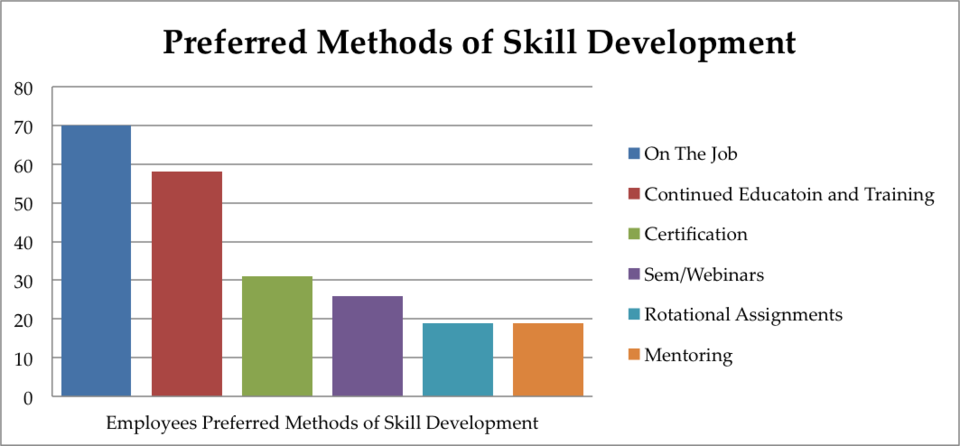Manufacturing Innovation Blog
Powered by the Manufacturing Extension Partnership

One of the most appealing characteristics of a capitalist society is the emphasis on consumer demand to drive product and service development. Want your burger with mustard, but not ketchup? No problem! Want your jeans boot-cut rather than bell-bottomed? No problem! Want your grocery store to prepare your dinner? Again, no problem!
So, given our predilection for having things precisely suit our needs and demands, why do we feel limited in our professional training options? Want to take a course on supervisory training? Then you need to show up to the local training center for the 10:00 a.m. class. Want to learn how to create an excel spreadsheet? Sign up for a course at the local junior college. Want to know how to improve communication with your colleagues? Well, you get the picture.
The funny thing is 70 percent of employees prefer to get their skill development on the job, not off it. An annual survey from The 2013 Kelly Global Workforce Index describes how 19 percent of employees prefer mentoring, 19 percent like rotational assignments, 26 percent choose webinars and seminars, and over two-thirds surveyed prefer to develop their skills at the workplace.[i]

Contextually, that makes perfect sense. What better time or place to learn how to do your job better than on the job? You are interacting with your colleagues and supervisors, you’re working with your own technology, and you’re participating in “action learning” – using real-time actions derived from actual workplace problems.
Of course, this doesn’t mean that there isn’t a place for continuing education at the local community college or university. But it looks like a lot of the continuing training taking place today could be done more cost effectively inside companies, and that employees would prefer that to having to arrange for other off-site, off-hours training. And since 57 percent of those surveyed said they participate in training in order to get a promotion from their current employer, providing training appears to be an excellent retention tool, possibly mitigating the impulse of good employees to jump ship to someplace where they can learn more and move up.[ii]
A great example of on-the-job training comes from GL Construction Laser & Machine Control System. They provide advanced laser solutions for the construction industry and are located in Jacksonville, Arkansas.
GL worked with MEP Center, Arkansas Manufacturing Solutions, to create a lean transformation strategy that included lean training, Kaizen improvement events, and Training Within Industry (TWI). The TWI method provides front-line personnel with the skills to establish a culture that embraces change, improves methods, and facilitates standard work. TWI’s "Learn By Doing" program followed a proven four-step process: preparation, presentation, application, and testing. AMS helped AGL balance production lines, implement a new inventory system that streamlined several processes, and improve efficiency in office areas.
Now that’s what I call demand-driven training. Employees learned how to revamp their production capacity and ensure that the business remains competitive for years to come!
[i] Global Insights on Training and Development. ASTD T+D magazine, September 2013. Page 14.
[ii] Ibid.
About the author
Related Posts
Comments
- Reply

